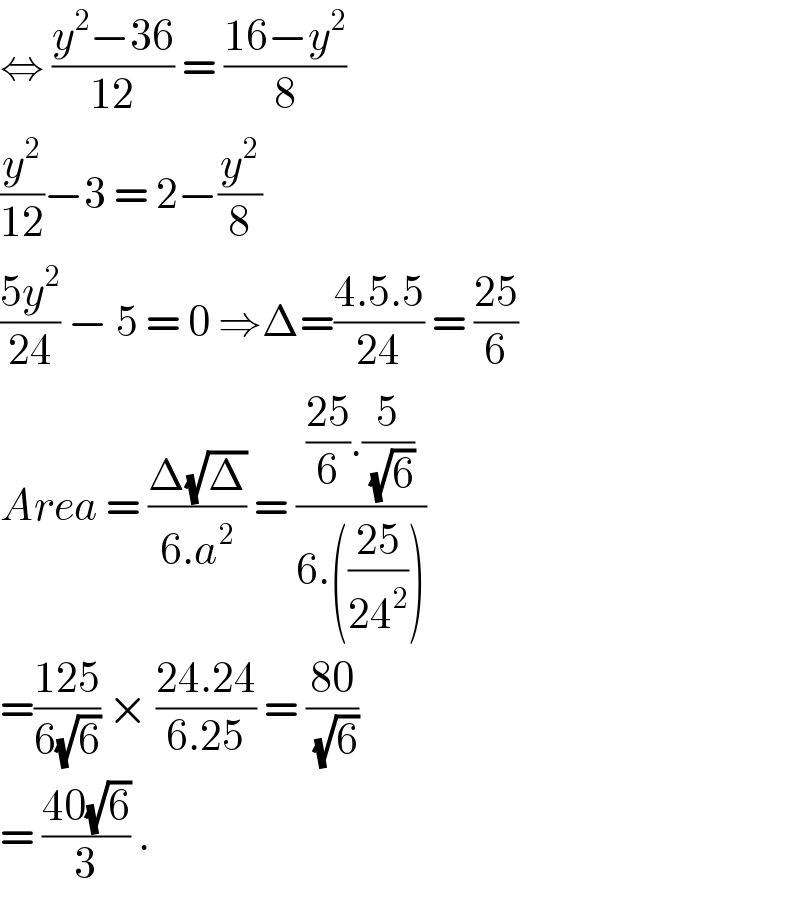
Question Number 102444 by bemath last updated on 09/Jul/20

$${find}\:{the}\:{area}\:{bounded}\:{the} \\ $$$${curves}\:{y}^{\mathrm{2}} =\:\mathrm{36}+\mathrm{12}{x}\:{and}\: \\ $$$${y}^{\mathrm{2}} =\mathrm{16}−\mathrm{8}{x}\: \\ $$
Answered by bemath last updated on 09/Jul/20

$$\Leftrightarrow\:\frac{{y}^{\mathrm{2}} −\mathrm{36}}{\mathrm{12}}\:=\:\frac{\mathrm{16}−{y}^{\mathrm{2}} }{\mathrm{8}} \\ $$$$\frac{{y}^{\mathrm{2}} }{\mathrm{12}}−\mathrm{3}\:=\:\mathrm{2}−\frac{{y}^{\mathrm{2}} }{\mathrm{8}} \\ $$$$\frac{\mathrm{5}{y}^{\mathrm{2}} }{\mathrm{24}}\:−\:\mathrm{5}\:=\:\mathrm{0}\:\Rightarrow\Delta=\frac{\mathrm{4}.\mathrm{5}.\mathrm{5}}{\mathrm{24}}\:=\:\frac{\mathrm{25}}{\mathrm{6}} \\ $$$${Area}\:=\:\frac{\Delta\sqrt{\Delta}}{\mathrm{6}.{a}^{\mathrm{2}} }\:=\:\frac{\frac{\mathrm{25}}{\mathrm{6}}.\frac{\mathrm{5}}{\sqrt{\mathrm{6}}}}{\mathrm{6}.\left(\frac{\mathrm{25}}{\mathrm{24}^{\mathrm{2}} }\right)} \\ $$$$=\frac{\mathrm{125}}{\mathrm{6}\sqrt{\mathrm{6}}}\:×\:\frac{\mathrm{24}.\mathrm{24}}{\mathrm{6}.\mathrm{25}}\:=\:\frac{\mathrm{80}}{\sqrt{\mathrm{6}}} \\ $$$$=\:\frac{\mathrm{40}\sqrt{\mathrm{6}}}{\mathrm{3}}\:. \\ $$
